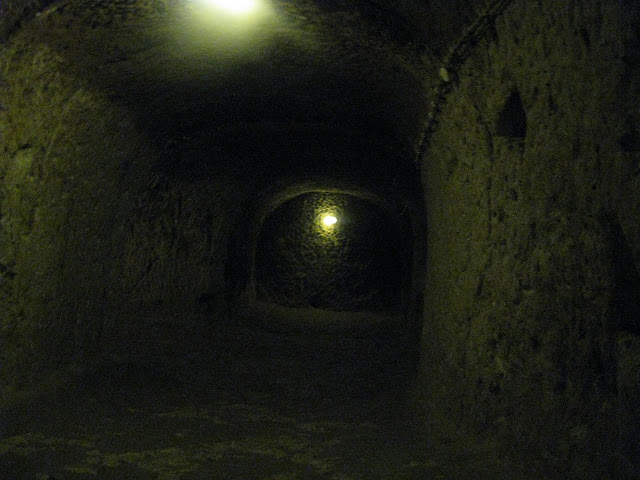So to put you in the picture about this place. Quoting directly from a book about this area, this is how these amazing forms evolved:
"Millions of years ago when Erciyes was an active volcano, the lava from its eruptions covered an area of 20,000 square kilometres. The volcanic flows were then shaped by tremendous wind and water erosion for more millions of years. The softer rock and soil were eroded away leaving the hard cap rock on tall pillars to form the fairy chimneys.
The Christians taking shelter in the valleys of Goreme because of Arab raids, named this place 'Gor Emi' meaning "you cannot see this place". The name was changed to Korama and then to Goreme. "
A FURTHER HISTORY LESSON....IF YOU REALLY WANNA KNOW.
"Cappadocia was first settled by the Hatti, a bronze age grouping. By 2000 BC the Hatti had succumbed to western european settlers, the Hittites. The Hittite empire waned about 1200 BC. Neighbouring kingdoms variously exercised control over the region, and around this time underground cities were thought to have been excavated. Sixth century BC the Persians took control until Alexander the Great liberated the region in 333 BC. It remained independant for 350 years until the Romans annexed it around 18 AD. The Cappadocians went on with their trogloditic existance relatively undisturbed. Christianity was introduced in the first century AD by St. Paul as a defence measure against persecution. The Christians burrowed deeper into the soft 'tufa', fashioning elabourately decorated churches, monasteries and storage areas. As each threat went through the region, Christians chose to move underground, hiding themselves by rolling stones across the entrances of their cave dwellings and underground cities.
From 726 to 843 the iconoclastic controversy during this period - images other than the cross were forbidden, and some monasteries were closed. In Cappadocia the monks responded by taking their art underground and continued to decorate churches and monasteries. It was also a response to Arab raids - when the Arabs encountered images of living things they destroyed them according to Islamic teachings. There are still about 1000 churches in Cappadocia, and 150 of them are decorated with frescoes. Then later, the Mongols came, then the Ottomans, but the Cappadocians continued their cave living as they had done for aeons as protection against these threats."
(All that stuff taken from a book on the area....just to let you know what this place is about. Otherwise, it's all a mystery).
UNDERGROUND CITY
We were driven out to a town where we got out and were taken to some building that looked a bit like a bunker. Down a set of stairs and we were underground, and into a network of tunnels and chambers that went on and on.
There were scores of tourist groups down there, taking turns to go along the tunnels and chambers, and after an hour of gophering it, I was good and ready to get out. I can't imagine what it must have been like for hundreds of people to live down here for up to two months at a time to avoid getting the chop. What fun it was to live back in those good ole days.
ILHARA GORGE
The next feature of the tour which was a long walk along the Ihlara Gorge where, yep, more Christians holed up, literally. There are thousands of churches down here, carved into the rocks. We walked around four k's along this gorge, following the river. ..and had lunch at the end of it.
SELIME MONASTERY
PIDGEON VALLEY
The people used pidgeons to communicate with each other across the valleys. You can see their little pidgeon holes on the outside of the cave entrances. Just like sending letters.
That is the finish of the Green Tour....not green because it's for Greenies, but just a colour to differentiate it from the Red Tour, which we did today. More of that later.

























No comments:
Post a Comment